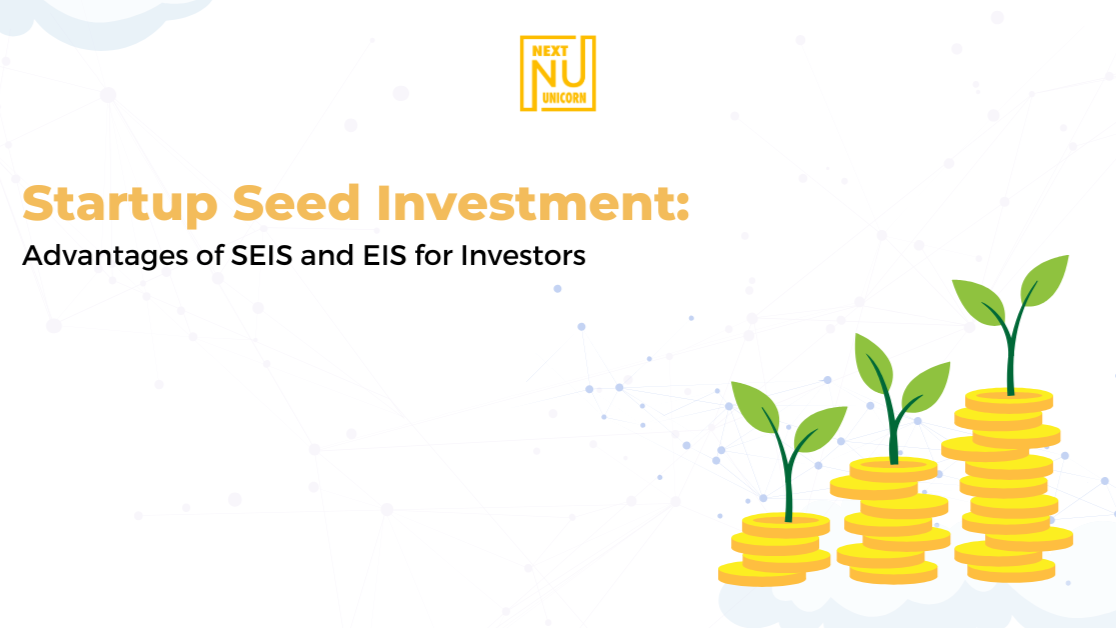


With venture capital and early-stage funding gaining momentum, seed investments play a crucial role in nurturing the potential of promising startups. For investors, this presents a valuable opportunity to engage with exciting innovations at their inception while also reaping attractive tax benefits, particularly through the UK’s Seed Enterprise Investment Scheme (SEIS) and Enterprise Investment Scheme (EIS). Understanding these schemes’ unique advantages can be transformative, positioning investors to support startup growth while securing substantial tax relief. Here, we’ll dive deep into how SEIS and EIS work, how they benefit investors, and why they are essential for accelerating innovation in today’s economy.
What Are SEIS and EIS?
SEIS and EIS are government-backed schemes in the UK designed to encourage private investors to fund early-stage startups by offering generous tax incentives. Since startups carry inherent risk due to their untested products or services, SEIS and EIS mitigate these risks for investors while ensuring a steady flow of capital to young, innovative companies.
Seed Enterprise Investment Scheme (SEIS)
SEIS was introduced to assist seed-stage companies who were just beginning to develop their product or services with limited capital. Under SEIS:
- Investors can claim up to 50% income tax relief on investments up to £100,000 per year.
- Capital Gains Tax (CGT) relief is available if SEIS shares are held for at least three years.
- Potential exemption from CGT on profits gained from SEIS investments.
This high tax relief makes SEIS one of the most attractive options for risk-tolerant investors looking to support pioneering startups.
Enterprise Investment Scheme (EIS)
Designed for slightly more mature but still early-stage companies, EIS offers valuable incentives to investors while diversifying their portfolios. Benefits under EIS include:
- 30% income tax relief on investments up to £1 million annually.
- No CGT on profits if shares are held for a minimum of three years.
- Loss relief against income or capital gains tax, offering a safety net should the investment not yield returns.
These factors make EIS suitable for investors who seek opportunities in innovative industries while enjoying significant tax advantages.
Key Advantages of SEIS and EIS for Investors
1. Diversification in a High-Growth Sector
Early-stage funding in startups offers diversification opportunities in a sector with high growth potential. Traditional markets like stocks or bonds may not yield the explosive growth that startups can. With SEIS and EIS investments, investors can access sectors with high upside potential- like tech, biotech, and clean energy- while still reducing their tax liabilities.
2. Generous Tax Relief Options
For investors, the tax benefits offered by SEIS and EIS are a significant advantage. The 50% income tax relief from SEIS and 30% from EIS make both options attractive. Additionally, by holding shares for at least three years, investors can completely avoid CGT, meaning any profit made from the investment is tax-free. This dual advantage of tax relief and CGT exemption maximizes returns on investment while mitigating overall risk.
3. Minimizing Losses Through Loss Relief
Loss relief provides a crucial safety net for seed investments, which inherently carry risk. Both SEIS and EIS allow investors to claim loss relief if the startup underperforms, offsetting the loss against income tax or CGT. For example, an investor who invests £10,000 in a startup that fails can claim up to 45% of the loss back through income tax relief, depending on their tax rate. This not only reduces financial exposure but also incentivizes investors to engage with high-potential startups that might otherwise feel too risky.
4. Driving Innovation and Economic Growth
Investing in startups through SEIS and EIS not only provides tax benefits but also helps fuel innovation and job creation. By supporting startups, investors play a direct role in accelerating startup growth and bringing new technologies, products, and services to market. This drives economic expansion, especially in sectors that align with the government’s focus, such as clean energy and healthcare. In turn, successful startups create jobs and foster competitive innovation, benefiting society as a whole.
How SEIS and EIS Compare with Traditional Investment Options
When compared to traditional investment methods like stocks, bonds, and real estate, SEIS and EIS investments offer unique benefits but also come with certain risks. Here are the key factors that distinguish them:
- Risk Profile: Startup investments are high-risk, but SEIS and EIS mitigate this through loss relief and tax incentives.
- Return Potential: Startups, especially in technology, have the potential for significant returns compared to mature stocks.
- Liquidity: SEIS and EIS investments are not easily liquidated, as shares must be held for a minimum period to qualify for tax relief.
Steps for Investors Considering SEIS and EIS
To make the most out of SEIS and EIS investments, consider the following steps:
- Research Potential Startups: Focus on sectors with strong growth potential that align with your risk tolerance.
- Understand the Requirements: Familiarize yourself with eligibility criteria, tax reliefs, and holding periods.
- Plan for Diversification: A diversified portfolio across different sectors helps spread risk.
- Consult with Advisors: Working with tax and investment advisors can help you optimize your investments and comply with SEIS/EIS regulations.
Conclusion
Seed investments through SEIS and EIS offer a unique and powerful vehicle for investors to participate in the startup growth journey while enjoying remarkable tax incentives. The schemes are crafted to reward investors for supporting the innovative businesses that will define the future economy. For investors with a risk appetite, SEIS and EIS represent not only a chance for financial gain but also an opportunity to contribute meaningfully to the advancement of industries and technologies that shape tomorrow. As the appetite for early-stage funding grows, so too does the potential for investors who embrace the full range of benefits that SEIS and EIS offer.




Comments are closed.